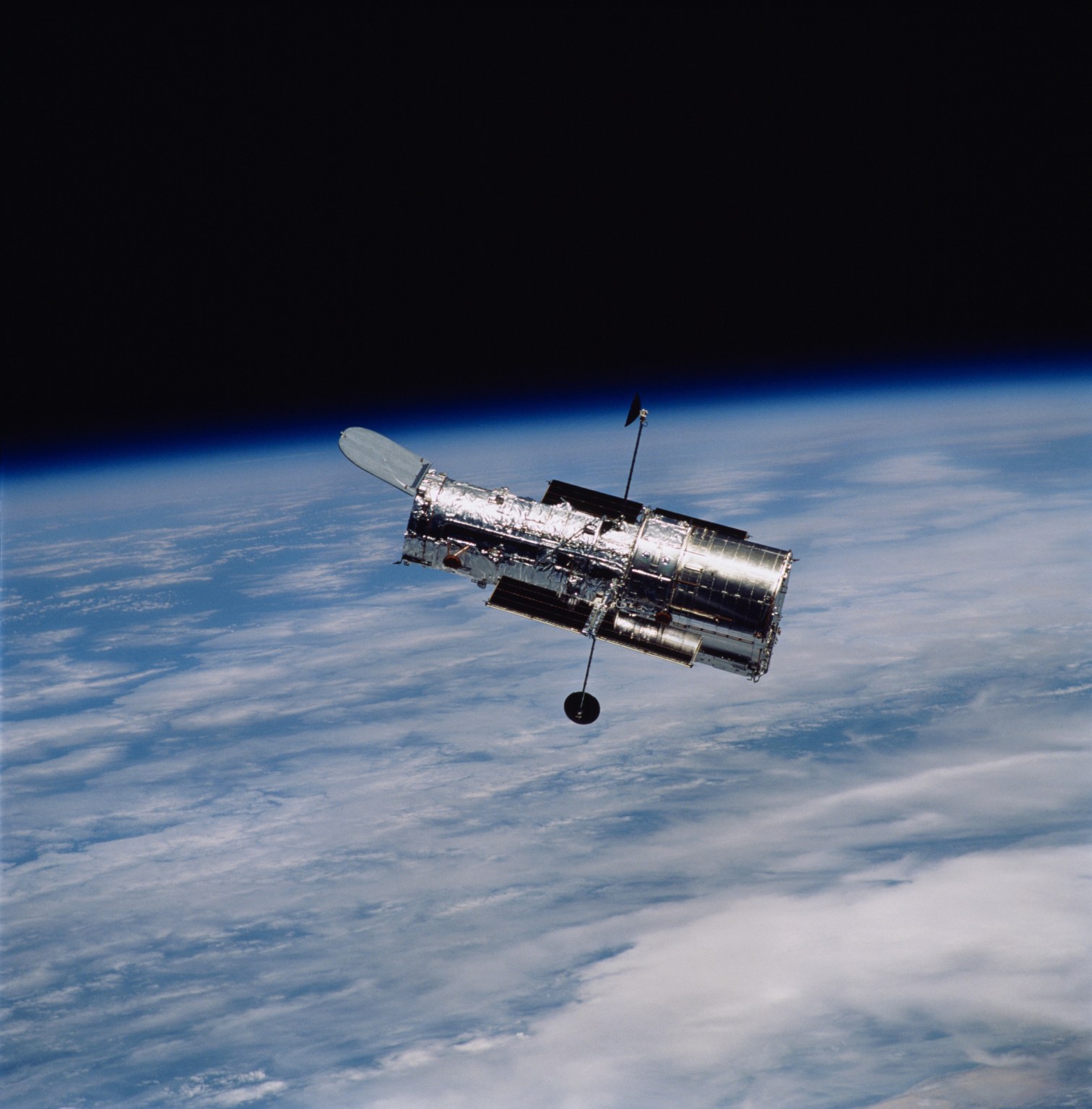Though ozone may be diminishing on Earth, it is being manufactured one-half billion miles away, on Jupiter's largest satellite, Ganymede.
NASA's Hubbe Space Telescope found ozone's spectral "fingerprint" during observations of Ganymede made by Keith Noll and colleagues at the Space Telescope Science Institute in Baltimore, Maryland. These Hubble Faint Object Spectrograph results were presented at the American Astronomical Society's 27th Annual Meeting of the Division of Planetary Sciences in Kona, Hawaii.
The amount of ozone detected on Ganymede is small by earthly standards. The total is only a tiny fraction (between 1-10 percent) of the amount of ozone destroyed each winter in Antarctica's notorious "ozone hole" (a location on Earth where ozone levels seasonally drop to extremely low levels.)
Unlike ozone production in Earth's atmosphere, Ganymede's ozone is produced by charged particles trapped in Jupiter's powerful magnetic field (much like the Earth's Van Allen radiation belts). Jupiter's 9-hour, 59-minute rotation sweeps these particles along at tremendous speed, where they overtake the slower moving Ganymede and "rain" down onto the surface. The trailing hemisphere of Ganymede bears the brunt of this particle "sandblasting" (just as our Moon keeps the same face tilted toward Earth, Ganymede keeps the same face turned toward Jupiter, and so has a "leading" and "trailing" hemisphere as it orbits the giant planet).
The charged particles penetrate the ice surface where they disrupt water molecules. Simulations of this unusual environment in laboratory experiments, done by Hubble team member Robert Johnson (University of Virginia), suggest ozone is a possible product when energetic ions known to be present in Jupiter's magnetosphere impact water ice. However, the exact steps leading to ozone production are not yet fully understood, according to Noll.
Though no atmosphere has yet been detected on Ganymede, "the evidence for all this oxygen chemistry going on in the surface ice is a pretty strong hint that Ganymede will also turn out to have a tenuous oxygen atmosphere," said Noll. Earlier this year, Hubble detected a thin oxygen atmosphere on the Jovian moon, Europa.
This observation could only be done using a telescope located in space, because Earth's own atmospheric ozone absorbs the ultraviolet signature of ozone on Ganymede's surface. Ozone's presence was first hinted at during observations with the International Ultraviolet Explorer satellite (IUE), made by Arthur L. Lane of the Jet Propulsion Laboratory and a co-investigator on the HST team. Hubble's greater sensitivity was required to make a definite and unambiguous detection.
Ozone, a relatively unstable molecule made up of three atoms of oxygen, is found in Earth's atmosphere. Most ozone is concentrated in a layer some 16 miles (25 km) above the Earth's surface. This ozone layer is crucial to life on Earth, because it acts as a protective shield from the Sun's harmful ultraviolet radiation which can cause skin cancer, cataracts, and other health problems. Closer to Earth's surface, however, ozone produced from man-made pollutants is harmful, causing damage to lung tissue and plants.
Jupiter's largest moon (3,280 miles or 5,262 km in diameter; 1.5 times the size of the Earth's Moon), Ganymede's surface is composed of rock and ice beneath which lies a water/ice mantle and rocky core, according to models.































